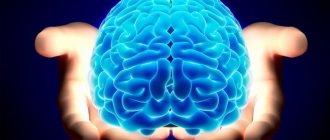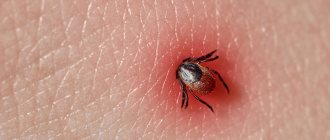What is organic damage to the nervous system?
Organic damage to the central nervous system
- a pathological condition in which the brain does not function fully. The lesion can be congenital or appear due to trauma, stroke, infectious diseases of the brain, alcoholism and drug addiction.
Lesions are divided into grades 1-3. Stage 1 lesions are diagnosed in many people; they do not manifest themselves in any way and do not require treatment. Lesions of degrees 2 and 3 interfere with normal life and can provoke more dangerous diseases, so they need to be treated.
Types of nervous system diseases
The peripheral NS performs the communication function. Fibers reach out to every organ, tissue, and cell in the human body. Thanks to these connections, the brain receives complete information about life processes. This allows you to regulate the functioning of the body, respond in a timely manner to destructive factors, and maintain vital functions.
Since the entire human body is permeated by nerve fibers, NS diseases can be expressed in various pain symptoms. Based on the location of pain, one or another lesion can be diagnosed.
Doctors distinguish the following groups of diseases of the central nervous system and PNS:
- Vascular - they are divided into chronic and acute. The chronic group includes cerebrovascular accidents, chronic cerebral ischemia (also called encephalopathy), and vascular parkinsonism. Acute - strokes, ischemic attacks.
- Infectious are meningitis (inflammation of the meninges), encephalitis (inflammation of the brain matter), myelitis (inflammation of the spinal cord).
- Autoimmune – damage to the nervous system as a result of inadequate functioning of one’s own immunity. The most common manifestation is multiple sclerosis.
- Neurodegenerative diseases are diseases that are accompanied by the death of nerve cells. Among this group are Parkinson's and Alzheimer's diseases.
- Traumatic – damage to the brain or spinal cord as a result of trauma.
How does organic damage to the nervous system manifest and what is dangerous?
When the central nervous system is damaged, the following symptoms are observed:
- fast fatiguability;
- impaired coordination, inability to perform simple movements and actions because of this;
- problems with hearing, vision;
- inability to concentrate on a task, the need to constantly be distracted;
- trouble sleeping, insomnia, nightmares or constant awakenings;
- urinary incontinence;
- decreased immunity, which often causes colds and other diseases.
Brain lesions are especially dangerous for children who are lagging behind in physical development and cannot study normally and communicate with peers. Also, lesions lead to oligophrenia, that is, mental retardation, and dementia - loss of skills and knowledge, and the inability to acquire new ones.
Nervous diseases: causes
The human nervous system “penetrates” the organs of the immune, endocrine, cardiovascular and other systems, and for this reason, diseases of any of these systems, primarily the immune system, are the cause of nervous diseases. But the main cause of diseases of the nervous system, of course, is infectious pathogens: - bacteria (streptococcus, staphylococcus, pneumococcus, meningococcus...); — viruses; - various fungi and parasites. These infections cause nervous diseases of any type: hereditary, traumatic, chronic, vascular... They (infections) affect our nervous system through the placental route (from mother to child), or through the peripheral nervous system, this is how damage occurs, for example, to herpes virus infection, rabies virus, polio ... Other causes of nervous diseases: - mechanical damage to the nervous system organs; — brain tumors and their metastases; - reasons of a hereditary nature; - chronic pathologies (Parkinson's and Alzheimer's diseases, chorea...). There are causes of nervous diseases that underlie a violation of a healthy lifestyle: - unhealthy diet; - lack of useful substances in the body (vitamins, drugs, various bioactive compounds...); - incorrect attitude towards life, which leads to various stressful situations and depressive states; - excessive use of various medications, incl. antidepressants, barbiturates, opiates, antibiotics, antitumor drugs... Also, any immune disease or disease of the endocrine system can cause a disease of the nervous system - this is detected using appropriate diagnostics.
Advantages of treating central nervous system lesions in our clinic
- We accept adults and children
. We enroll adult patients and preschool children. We send young patients to a doctor who specializes in brain damage in children. - We treat children in the presence of parents
. If a child experiences fear or anxiety, we conduct a consultation in the presence of the parents. If necessary, we carry out further treatment in front of the parents to reduce stress for the child. - We select therapy individually
. We assess the degree of damage, the presence of concomitant diseases and disorders. We select treatment taking into account the patient’s age, general health, and response to previous therapy. - We warn you about the duration of treatment and possible results
. We will tell you how long the treatment can last, since organic lesions require long-term therapy. We predict how effective the therapy will be in a particular case, and discuss this with the patient.
To make an appointment with a doctor, call or use the feedback form. The administrator will call you back, answer questions and help you choose a convenient appointment time.
Causes
Damage to the central nervous system in children can occur at the embryonic stage of development, during childbirth, and also after birth. Among the reasons are:
- Somatic diseases of the mother, taking medications, stress and bad habits during pregnancy, previous infectious diseases, pathologies of pregnancy;
- Birth injuries, immaturity of the woman’s body, pathological course of childbirth;
- Head injuries in children, neuroinfections, strokes, tumors of the brain and spinal cord.
Opening hours: 8:00 to 20:00
Telephone
Sign up
What diseases are these?
There are the following types of demyelinating diseases:
- Multiple sclerosis is a demyelinating disease of the central nervous system. The demyelinating disease multiple sclerosis is the most common pathology. Multiple sclerosis is characterized by a variety of symptoms. The first symptoms appear at the age of 20-30 years, women are more often affected. Multiple sclerosis is diagnosed by the first signs, which were first described by psychiatrist Charcot - involuntary oscillatory eye movements, trembling, scanned speech. Patients also experience urinary retention or very frequent urination, absence of abdominal reflexes, pallor of the temporal halves of the optic discs;
- ADEM, or acute disseminated encephalomyelitis. It begins acutely and is accompanied by severe cerebral disorders and manifestations of infection. The disease often occurs after exposure to a bacterial or viral infection and may develop spontaneously;
- diffuse disseminated sclerosis. It is characterized by damage to the spinal cord and brain and manifests itself in the form of convulsive syndrome, apraxia, and mental disorders. Death occurs within a period of 3 to 6-7 years from the moment the disease is diagnosed;
- Devic's disease, or acute neuromyelitis optica. The disease begins as an acute process, is severe, and progresses, affecting the optic nerves, which causes complete or partial loss of vision. In most cases, death occurs;
- Balo's disease, or concentric sclerosis, periaxial concentric encephalitis. The onset of the disease is acute, accompanied by fever. The pathological process occurs with paralysis, visual disturbances, and epileptic seizures. The course of the disease is rapid - death occurs within a few months;
- leukodystrophies - this group contains diseases that are characterized by damage to the white matter of the brain. Leukodystrophies are hereditary diseases; as a result of a gene defect, the formation of the myelin sheath of the nerves is disrupted;
- Progressive multifocal leukoencephalopathy is characterized by decreased intelligence, epileptic seizures, the development of dementia and other disorders. The patient's life expectancy is no more than 1 year. The disease develops as a result of decreased immunity, activation of the JC virus (human polyomavirus 2), often found in patients with HIV infection, after bone marrow transplantation, in patients with malignant blood diseases (chronic lymphocytic leukemia, Hodgkin's disease);
- diffuse periaxial leukoencephalitis. A hereditary disease that most often affects boys. Causes visual, hearing, speech, and other disorders. Progresses quickly - life expectancy is just over a year;
- Osmotic demyelination syndrome is very rare and develops as a result of electrolyte imbalance and a number of other reasons. A rapid increase in sodium levels leads to the loss of water and various substances from brain cells, causing the destruction of the myelin sheaths of nerve cells in the brain. One of the posterior parts of the brain is affected - the Varoliev bridge, which is most sensitive to myelinolysis;
- myelopathy is a general term for lesions of the spinal cord, the causes of which are varied. This group includes: tabes dorsalis, Canavan disease, and other diseases. Canavan disease is a genetic, neurodegenerative autosomal recessive disease that affects children and causes damage to nerve cells in the brain. The disease is most often diagnosed in Ashkenazi Jews living in Eastern Europe. Tabes dorsalis (locomotor ataxia) is a late form of neurosyphilis. The disease is characterized by damage to the posterior columns of the spinal cord and spinal nerve roots. The disease has three stages of development with a gradual increase in symptoms of damage to nerve cells. Coordination when walking is impaired, the patient easily loses balance, bladder function is often disrupted, pain appears in the lower limb or lower abdomen, and visual acuity decreases. The most severe third stage is characterized by loss of sensitivity of muscles and joints, areflexia of the tendons of the legs, development of astereognosis, the patient cannot move;
- Guillain-Barré syndrome - occurs at any age, refers to a rare pathological condition that is characterized by damage to the peripheral nerves of the body by its own immune system. In severe cases, complete paralysis occurs. In most cases, patients recover completely with adequate treatment;
- neural amyotrophy of Charcot-Marie-Tooth. A chronic hereditary disease, which is characterized by progression, affects the peripheral nervous system. In most cases, the myelin sheath of nerve fibers is destroyed; there are forms of the disease in which pathology of the axial cylinders in the center of the nerve fiber is detected. As a result of damage to the peripheral nerves, tendon reflexes fade and atrophy of the muscles of the lower and then upper extremities occurs. The disease belongs to progressive chronic hereditary polyneuropathies. This group includes: Refsum's disease, Roussy-Lévy syndrome, Dejerine-Sotta hypertrophic neuropathy and other rare diseases.









